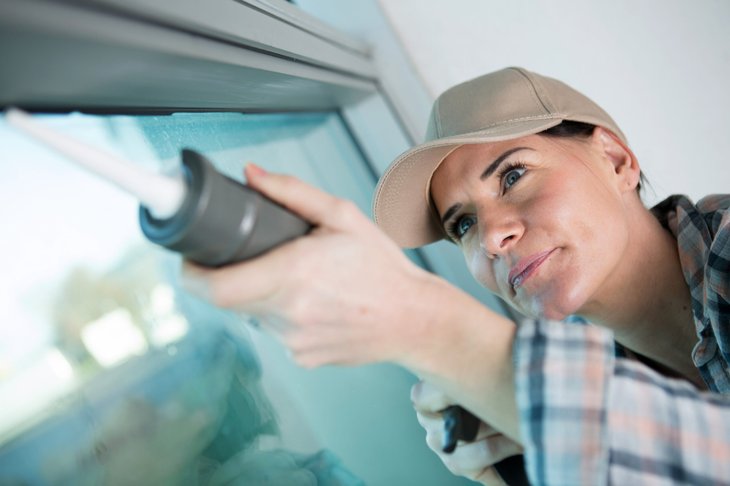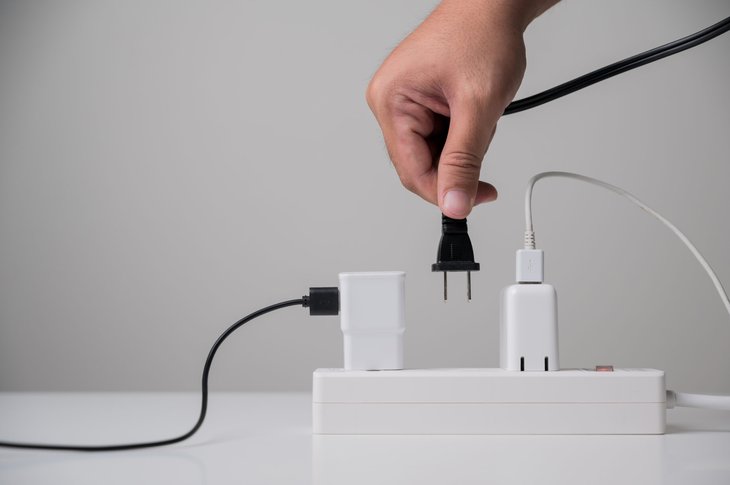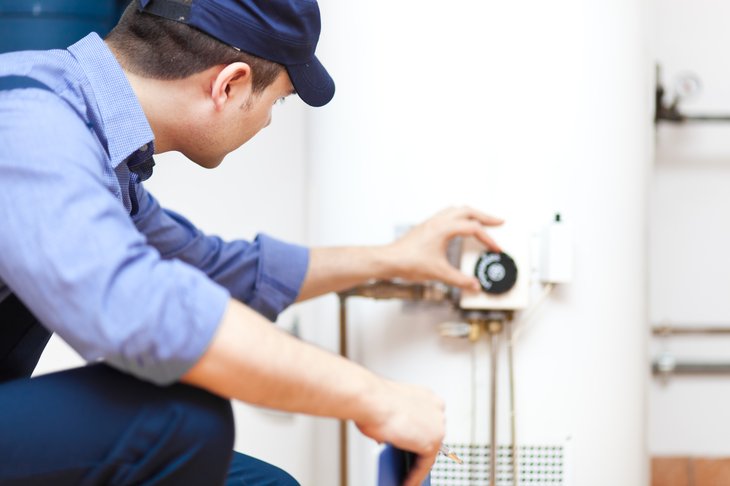
Editor’s Note: This story originally appeared on Point2.
In theory, the key to reducing the cost of utilities is simple: Lower your overall usage and perform regular maintenance. But, in practice, it takes time and patience to tick off everything on the list of factors that could affect a household’s usage in the long run, as well as month-to-month — from making sure the ducts around the house stay clean to washing clothes with cold water when possible.
The average American household spent around $4,150 on utilities in 2020, with more than $1,500 of that going to electricity bills. And, now that energy prices are on the rise, cutting down on monthly bills has become a challenge — but it can still be done. So, if you want to know how to save on utilities in between adjusting the thermostat and taking shorter showers, check out these tips.
1. Regular Maintenance Is a Must

One or two checkups a year on your home’s plumbing network, HVAC, and water heater can make a great deal of difference in driving down your energy cost and usage. A professional can identify wear and tear and suggest upgrades, where necessary — and before it’s too late. For instance, they can assess the plumbing’s unwanted leakage potential, as well as check for sediment build-up in a water heater.
The best part is that certain steps of a yearly schedule don’t even have to be taken by a professional, such as covering up the A/C during winter months or cleaning up coils.
“Homeowners should check their filters monthly and clean/change as needed, but not less than every 3-6 months per the filter manufacturer’s recommendations,” advised Sam Northington, Program Manager of Skilled Trades at Piedmont Virginia Community College.
“The condensing unit of an HVAC system sits outside and is exposed to the elements,” Northington continued. “The coil of these units should be cleaned seasonally as needed to remove the buildup of dirt and other debris. Disconnect power to the unit either at the main breaker panel or service disconnect located next to the unit. Spray a light degreasing cleaner such as Simple Green or Mean Green on the condenser coil. Wait a few minutes and then gently rinse with a water hose. If the coil has significant dirt, pollen, or other foreign matter accumulation, then a light, soft brushing or vacuuming may be required prior to the application of cleaners and water. After, apply the degreasing cleaner and then gently rinse with a water hose.”
2. Insulation, Insulation, Insulation

Weatherproofing the house is also at the top of the list for anyone looking to cut down on monthly costs, regardless of the season.
First, start by checking for drafts near windows and doors, as well as air leaks in the attic and basement, in particular. Make sure to check for gaps under the sinks, too, and decide whether you need to install door sweeps or door draft stoppers.
To be sure, air leaks anywhere in the house are a major source of heat loss in the colder months — even in the garage, where very few turn on the heat. And, although insulating the garage door is often overlooked, it can make a big difference. Similarly, keep in mind that caulking or foam are your best bets if you need to seal any gaps around plumbing, electrical fixtures, or access hatches around the house, whereas weatherstripping works great for windows and exterior doors.
3. Eco-friendly lighting solutions

Energy efficiency can be as simple as switching out some of your incandescent lightbulbs around the house to LEDs. In addition to drastically reducing energy consumption, LED lightbulbs also have a longer life span and end up costing a lot less in the long run — around $4,000 in 20 years, to be exact.
Charles H. Culp, P.E., Ph.D., Professor with the Department of Architecture at Texas A&M University, goes even further and suggests replacing all lights with LED lighting — preferably dimmable.
“My advice is to replace all incandescent bulbs that get used more than a couple of hours per week with LED lighting,” Culp said. “LED lighting has several benefits. First, it will pay back the added cost in a short period when replacing incandescent or compact fluorescent bulbs, with the payback time depending on hours of use. Second, LED bulbs last longer than incandescent or compact fluorescent bulbs. Third, non-dimmable LEDs are low cost — even for under $1 each at discount stores. I prefer dimmable LEDs since these can be set to the lighting level needed, saving additional energy.”
4. Pay Extra Attention to the Windows

Sometimes, weatherstripping just doesn’t cut it against wider gaps or inexplicable air leaks — particularly around windows. As such, one way to keep drafts at bay is to reglaze windows, especially if your windows are old and single-paned glass.
Furthermore, if you’re willing to spend some cash and replace the windows around the house, give triple-glazed windows a go. In addition to being energy-efficient, triple-glazed windows also provide better insulation and keep out the cold, as well as excessive sunlight and noise.
Again, natural sunlight is the best way to reduce your usage of artificial light around the house. So, whatever option you choose, make sure the glass is clear and durable.
“Make use of natural light as much as you can,” Clark said. “If remodeling, consider windows, doors, and skylights placed in areas that allow the natural light from the sun to strategically light your home. Or, move your desk or other work surfaces closer to a sunny window to avoid having to turn on lights inside your home during the day.”
5. Preserving the Ducts Is Essential

Deteriorating ducts are a pain: Not only can they do damage when left unattended for long periods of time, but replacing them can also set you back a pretty penny.
For that reason, replacing air filters and dusting regularly is crucial. While you’re at it, make sure the ducts are wrapped with insulation to prevent bursts and other tears — especially if you live in a colder area. This includes any ducts that are located in a crawl space or parts of the house with difficult access. Likewise, don’t forget to seal any potential leaks and confirm that the vents and all points of contact are unobstructed.
6. Invest in Power Strips

The age-old rule of turning off appliances you’re not using can only go so far. While some smart appliances stop using power when not in use, not all of them do so — especially older equipment. However, plugging appliances and devices into power strips that can easily be turned off is a surefire way to ensure no electricity is wasted.
Also, remember that many electronics still draw power even when turned off. Although the phenomenon has a cool name — “phantom power” or “vampire power” — it’s less cool seeing its effect on your monthly bill.
7. Use a Water Heater Timer

Using less hot water is a guaranteed way to save big on utility bills — but that’s easier said than done. As far as alternatives, solar water heaters can be found in sunnier parts of the country, while tankless water heaters are slowly gaining popularity nationwide.
However, if, like most people, you have a regular tank water heater, try installing a water heater timer on it. Essentially, the device lets you program when and how long the water heater works. Think programmable thermostat, but for your water heater. A professional can also tell you if your water heater could benefit from the similar option of installing an actual smart thermostat.
Plus, families can often benefit the most from a water heater timer because of their stable routine. For example, the device can be programmed to stop heating water when all family members are at school or at work.
Cutting your energy consumption and bills doesn’t have to take a lot of time, money, or effort. In fact, the best ways to do it are often the easiest. So, don’t postpone it any longer: The best time to start using these energy-saving tips is now.
Special thanks to Susan Spierre Clark, Ph.D., Assistant Professor and Chair of Sustainability Graduate Programs, Department of Environment & Sustainability, College of Arts and Sciences at University at Buffalo; Charles H. Culp, P.E., PhD., FASHRAE, LEED-AP, Professor, Department of Architecture, and Associate Director, Energy Systems Laboratory, Texas A&M University; and Sam Northington, Program Manager Skilled Trades with Piedmont Virginia Community College, who provided us with valuable insights on how to reduce usage and lower the utility bills.
Disclosure: The information you read here is always objective. However, we sometimes receive compensation when you click links within our stories.




